Where to kitesurf in Fuerteventura ?
Fuerteventura is one of the most famous islands of the Canaries for kitesurfing and the spots are numerous and varied. The archipelago is located in the Atlantic Ocean, off of the Moroccan coast.
A volcanic island of about 100 kilometers long from north to south, Fuerteventura will impress you with both its beautiful long sandy beaches in one part, and natural wild rugged side on the other part of the island. The magic of the island offers a surreal setting, and kiting here brings endless pleasure.
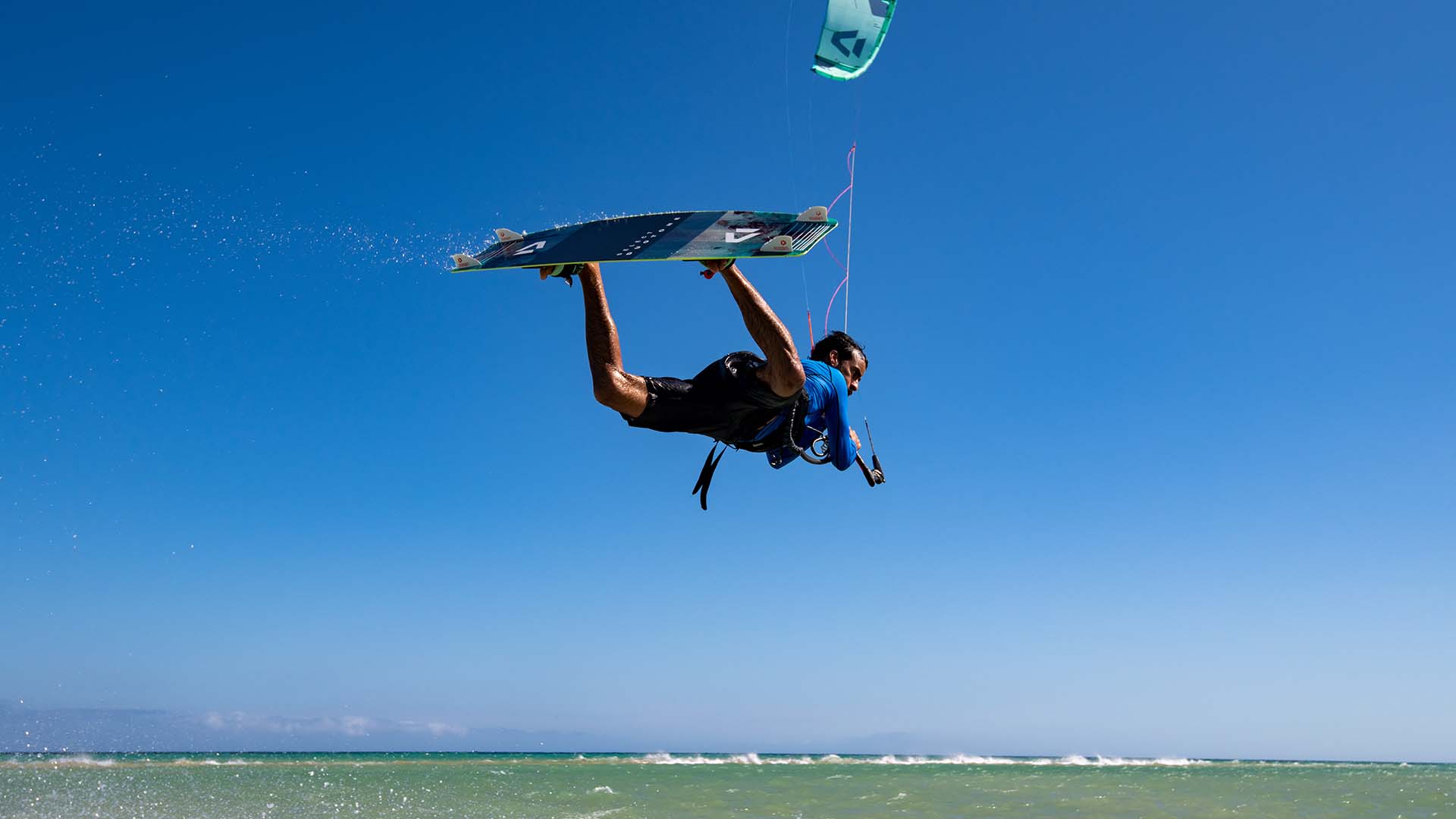
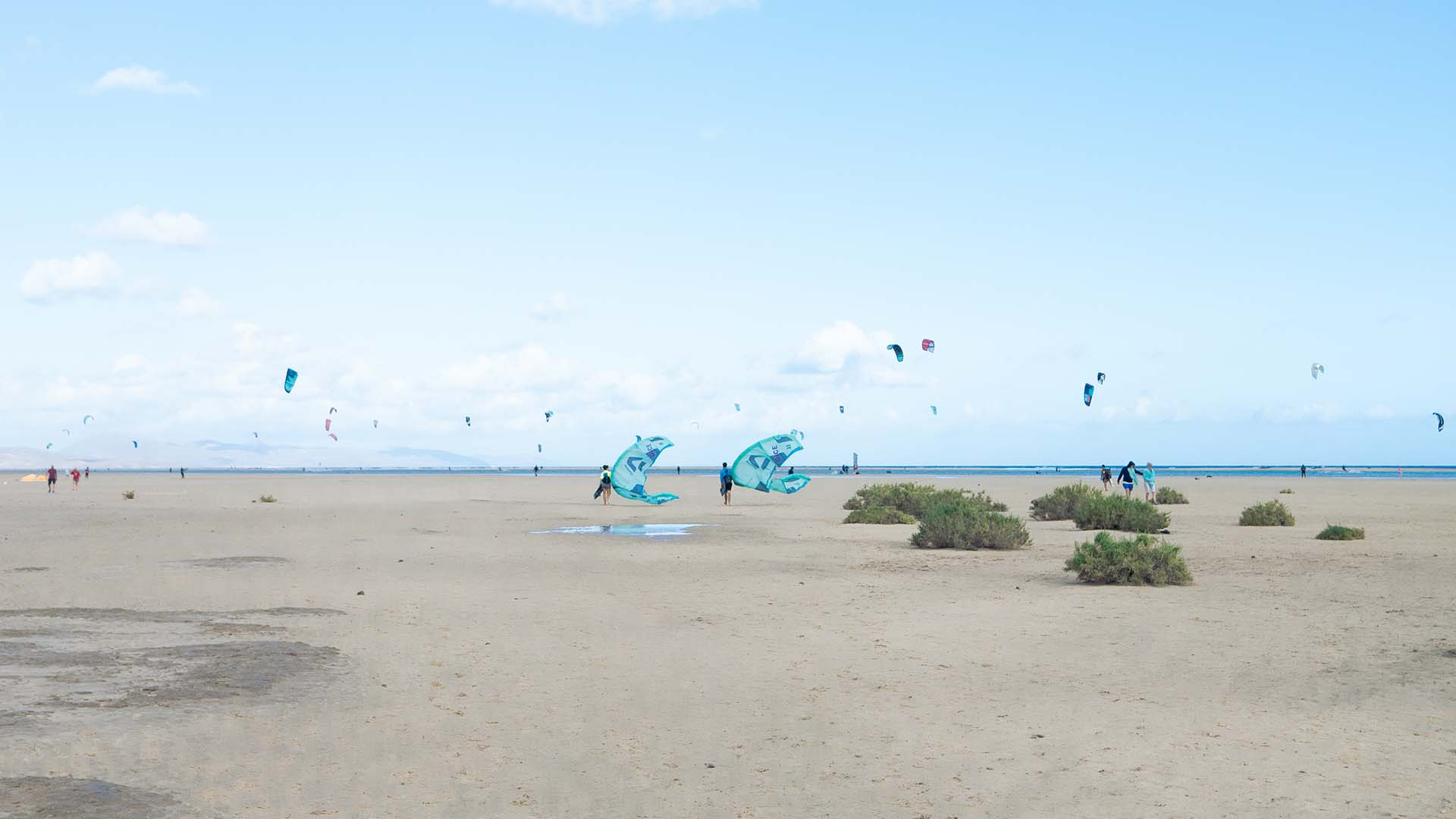
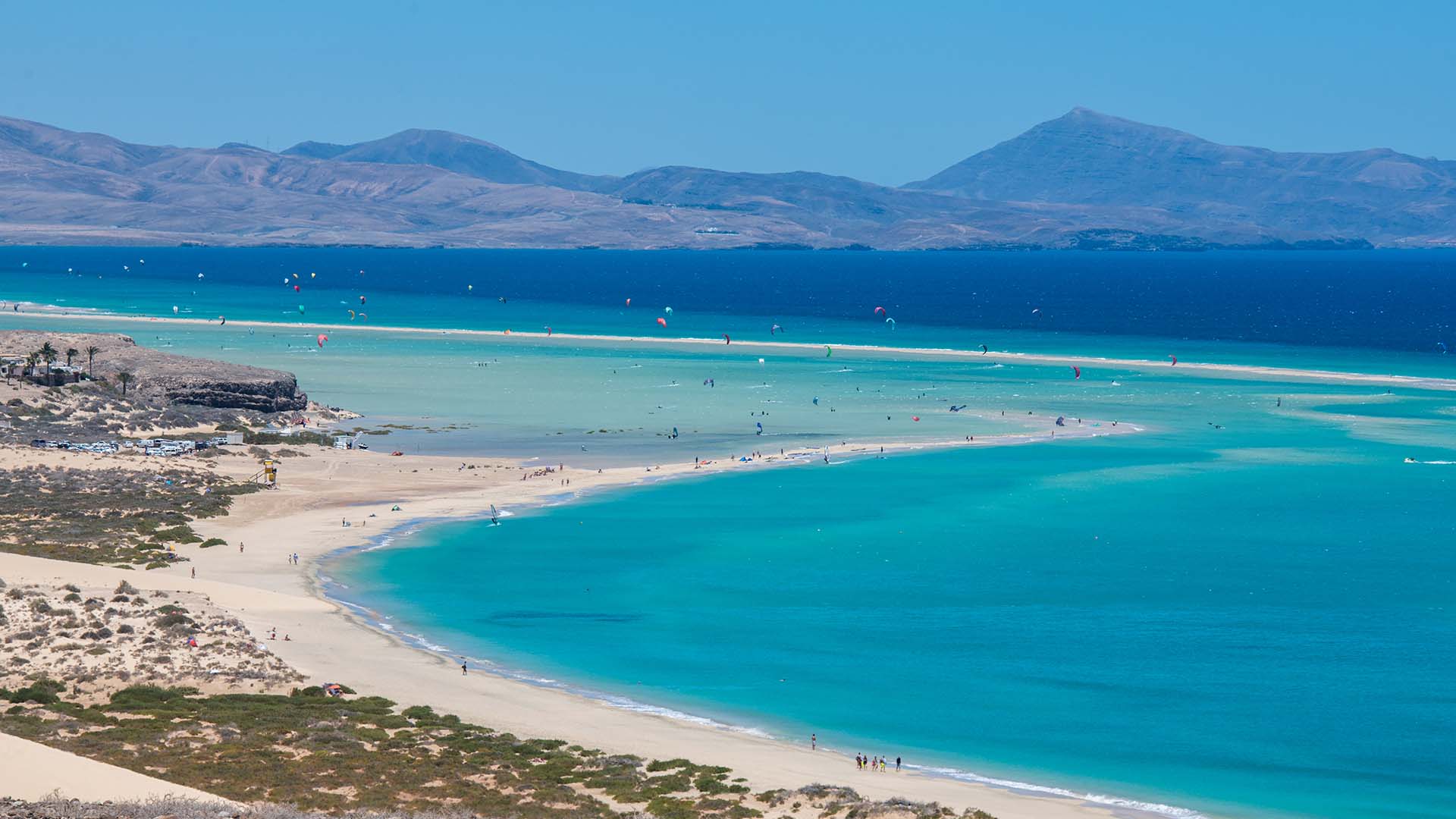
Where to Kitesurf in the north of Fuerteventura ?
The best known part of the north of the island is the town of Corralejo and its surrounding spots on the northeast coast. From beginners to intermediates the choice is less balanced than in the south of the island, although the very large Flag Beach is the ideal place for any rider, whatever their level. It is a freeride spot, with waves when the wind is strong, usually blowing side-shore. The spot is overall easy to access, but be careful at low tide as the volcanic rocks appear and can be very sharp.
Just north of Flag Beach, it is also possible to kitesurf at Rocky point, a spot intended for experienced riders as it works mainly at high tide when the waves are formed by both the wind and the north/northwest swell. Another wave spot near Corralejo is Glass Beach which is south of Flag Beach. Here, the level of kiteboarding goes up a notch because the wave is located on a slab and breaks faster.
The advantage of the kite spots near Corralejo is that they are only a few minutes away by car from the city where it is easy to find accommodation, either in an apartment or in a hotel. This means you will have time to enjoy the tapas bars both day and night!
A little further north, Majanicho is also a must in Fuerteventura for wave lovers, and it works most of the year. The waves are very often from the right and the best orientation is an easterly or north easterly wind.
For even more intense sensations and maximum adrenaline, head for the wild coast to the northwest. There you will discover the world famous wave spot of El Cotillo, bearing the same name as its authentic village. Very close to the beach of El Castillo, the launch is fast because of the frequent shorebreak. It is therefore advisable to sail at low tide and with a north-northeast wind and a north-northwest swell. This spot is only for kitesurfers who are used to surfing or sailing in swell. However, a small lagoon is created according to the tides and it is safe to surf there. After your session, treat yourself in one of the local restaurants, it is a must to taste the seafood and fresh fish!
Although the north and northwest of Fuerteventura are a real paradise for kiteboarding, don’t try to get in the water if you don’t think you’re up to it. It’s true that there are plenty of wave spots in the north of Fuerteventura, both sandy and rocky, but start with Flag Beach before you jump on any wave spots. Now why not head down to the very south of the island?
Where to Kitesurf in the south of Fuerteventura?
Much further south of Corralejo there are other beautiful beaches which are mostly sandy. The spot of Risco del Paso will be part of your kite trip, at least if you are looking for flat water, sometimes choppy, even shallow when the lagoon is full. The beach is isolated, with no hotels around the kite area, which explains the prevailing north-west wind blowing so regularly. By the way, the ION CLUB kitesurfing center has been in this place for several years, and that´s no coincidence!
Only a few kilometers north of Risco del Paso, the playa of Sotavento will certainly meet your expectations for those who prefer to surf without having to travel by car. The kitesurfing spot is close to a few hotels and only 3 kilometers from the small town of Corralejo. Ideal for beginners and freestyle riders.
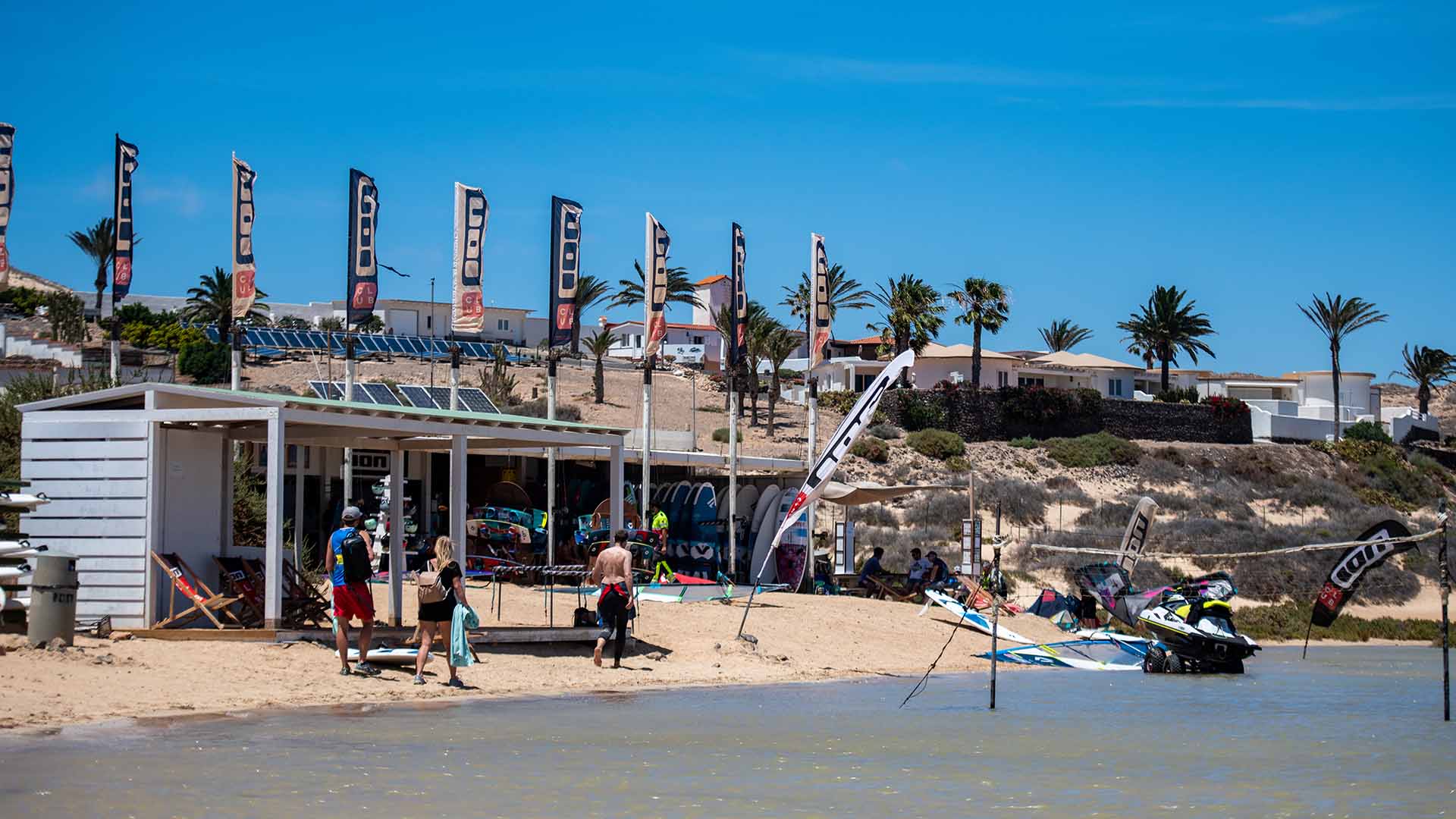
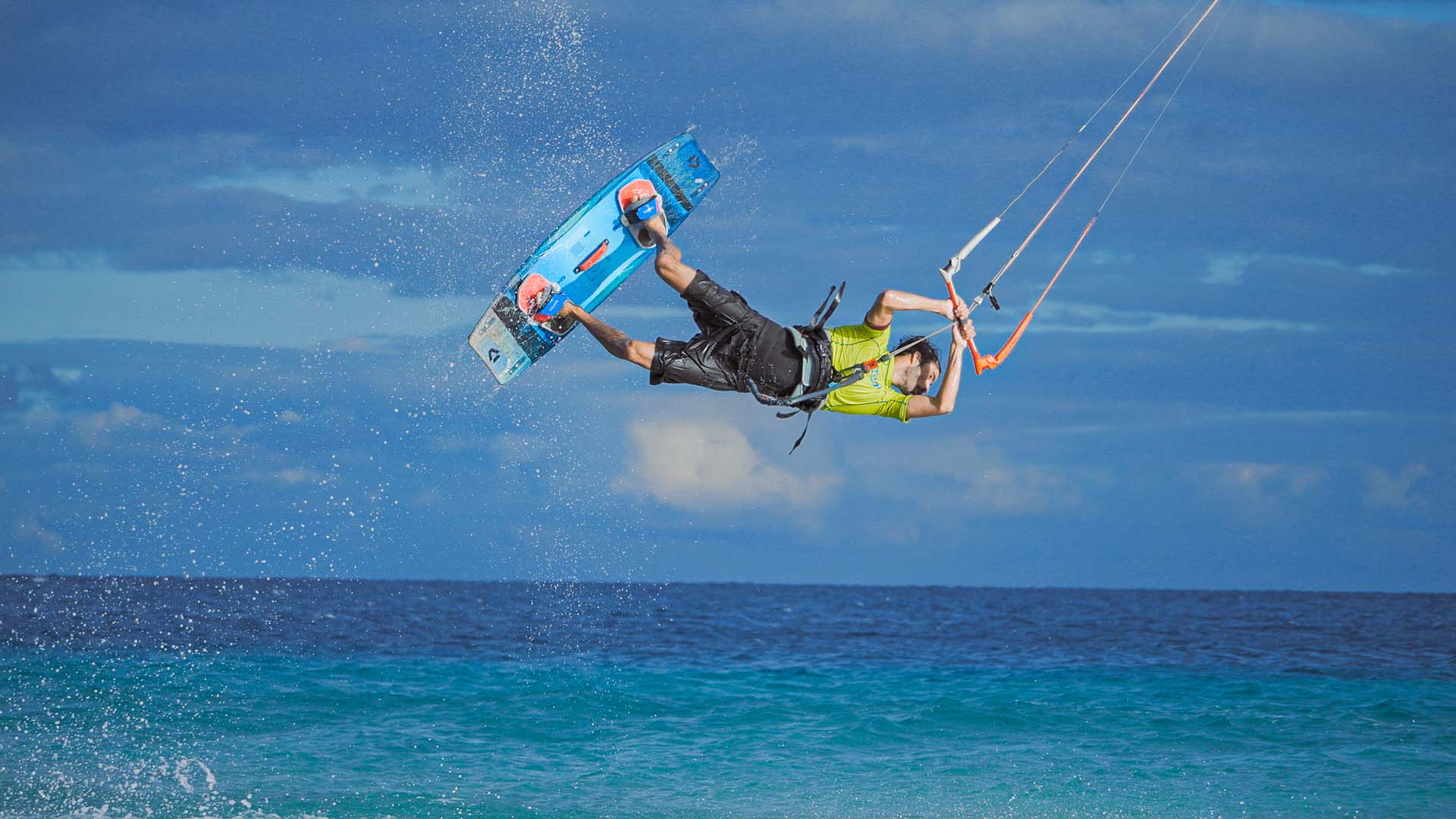
Why expect a good kitesurfing holiday in Fuerteventura?
Fuerteventura is bordered by the Atlantic Ocean and reveals a multitude of kitesurfing spots, be it waves, freeride, freestyle or flat water. Renting a car is the best way to discover them all. Fine sandy beaches, volcanic rock, cliffs, ocean as far as the eye can see, the best conditions are gathered on one island making it a top trip for any rider.
It is easy to get to Fuerteventura with your ID card and via one of the many flights from several European countries, or via the cities of Madrid and Barcelona. For the lucky ones with a direct flight, the travel time is only 4 hours.
Fuerteventura has the advantage of having a good climate all year round, which is why many kitesurfers head over there regularly. Stronger wind is very often present in the summer, but less waves, and an air temperature between 20 and 30°. In winter, it is the opposite. The water temperature ranges between 17 and 23°. Very acceptable!
The Canary Islands, and therefore Fuerteventura, are a part of Spain and so have that lovely Spanish feel. In the evening, it would be a shame to miss out on tasty tapas and sangria to the sound of Canarian music. You will probably have earned this moment of rest before dreaming of your next kite session … which we are sure is already on your mind!
